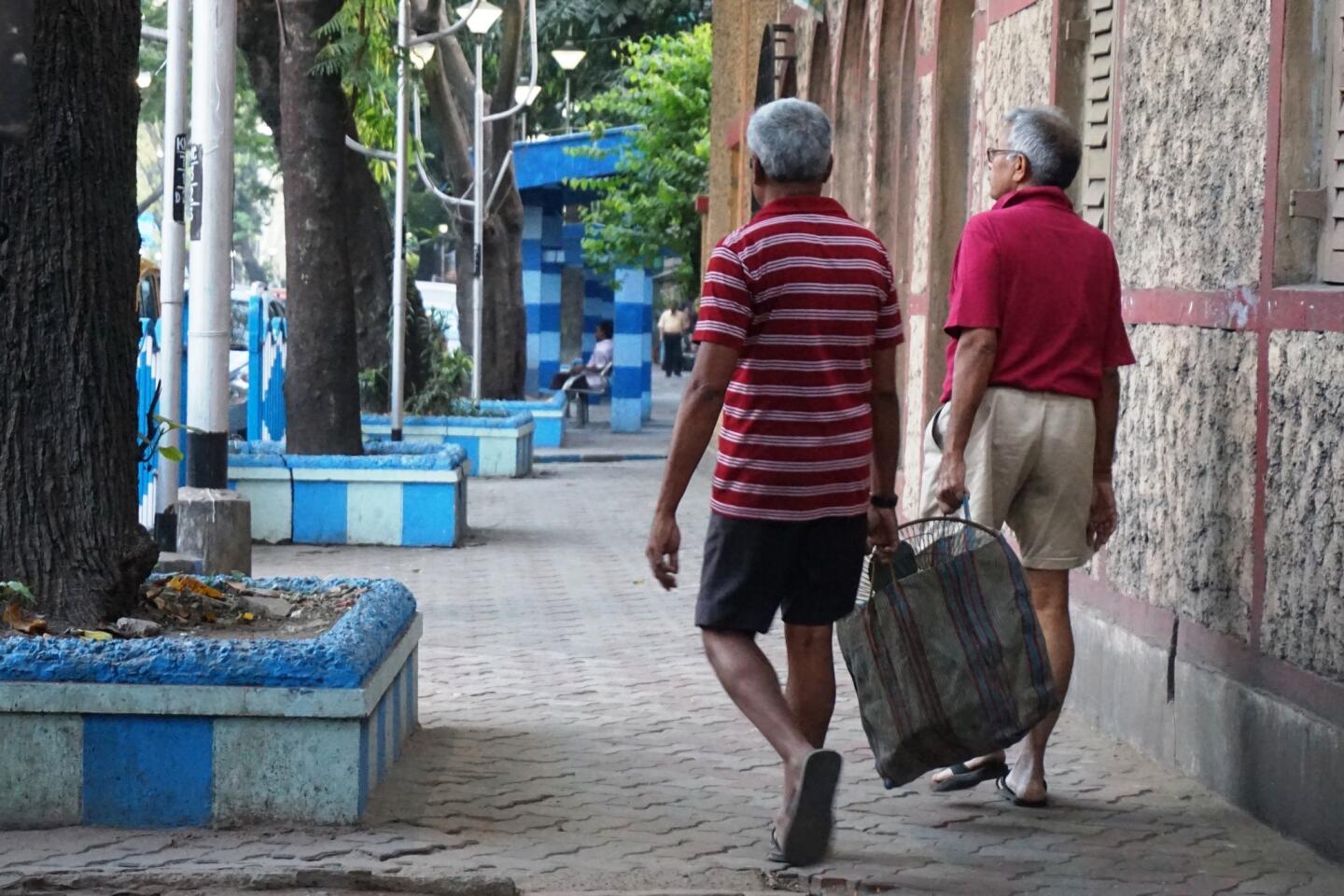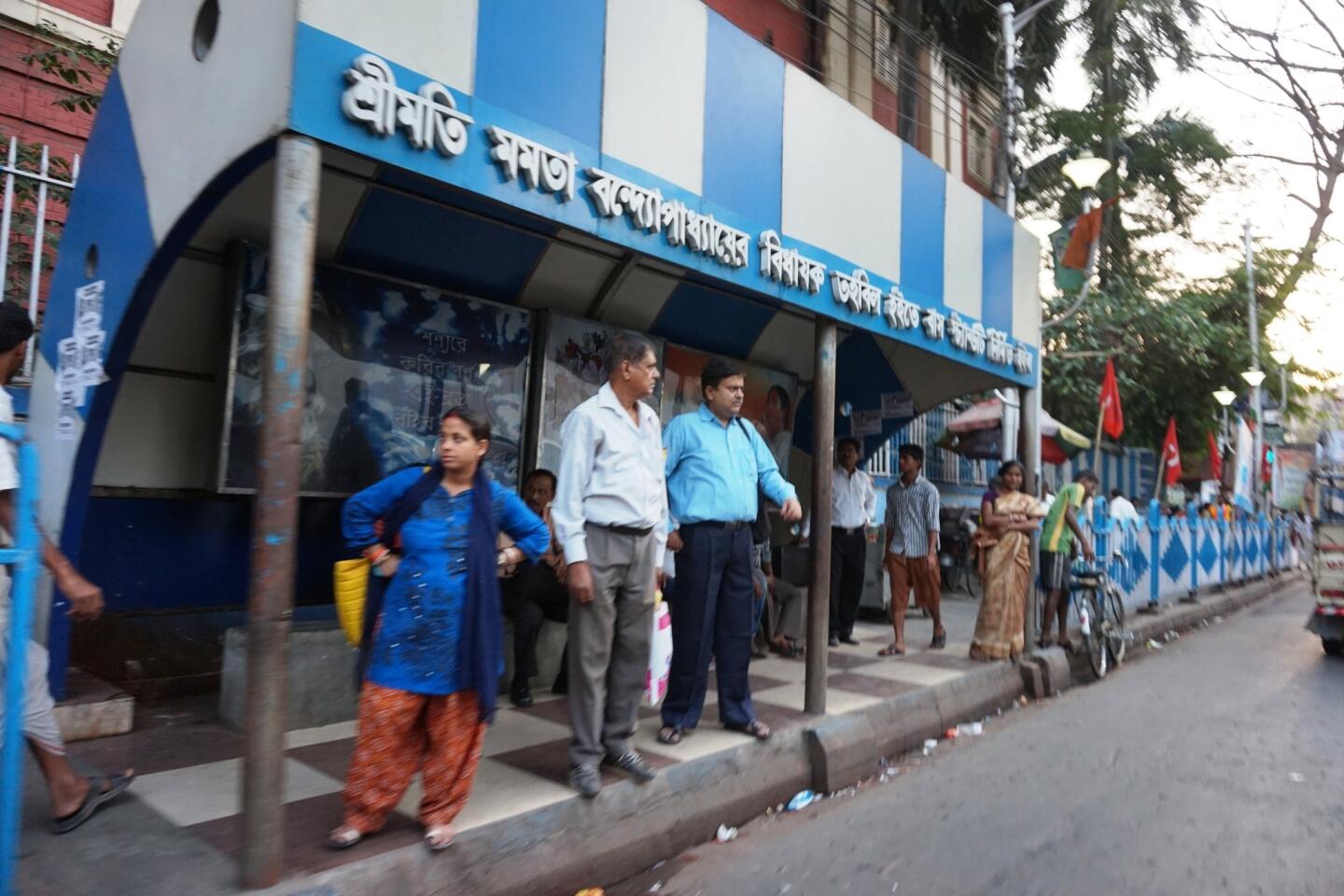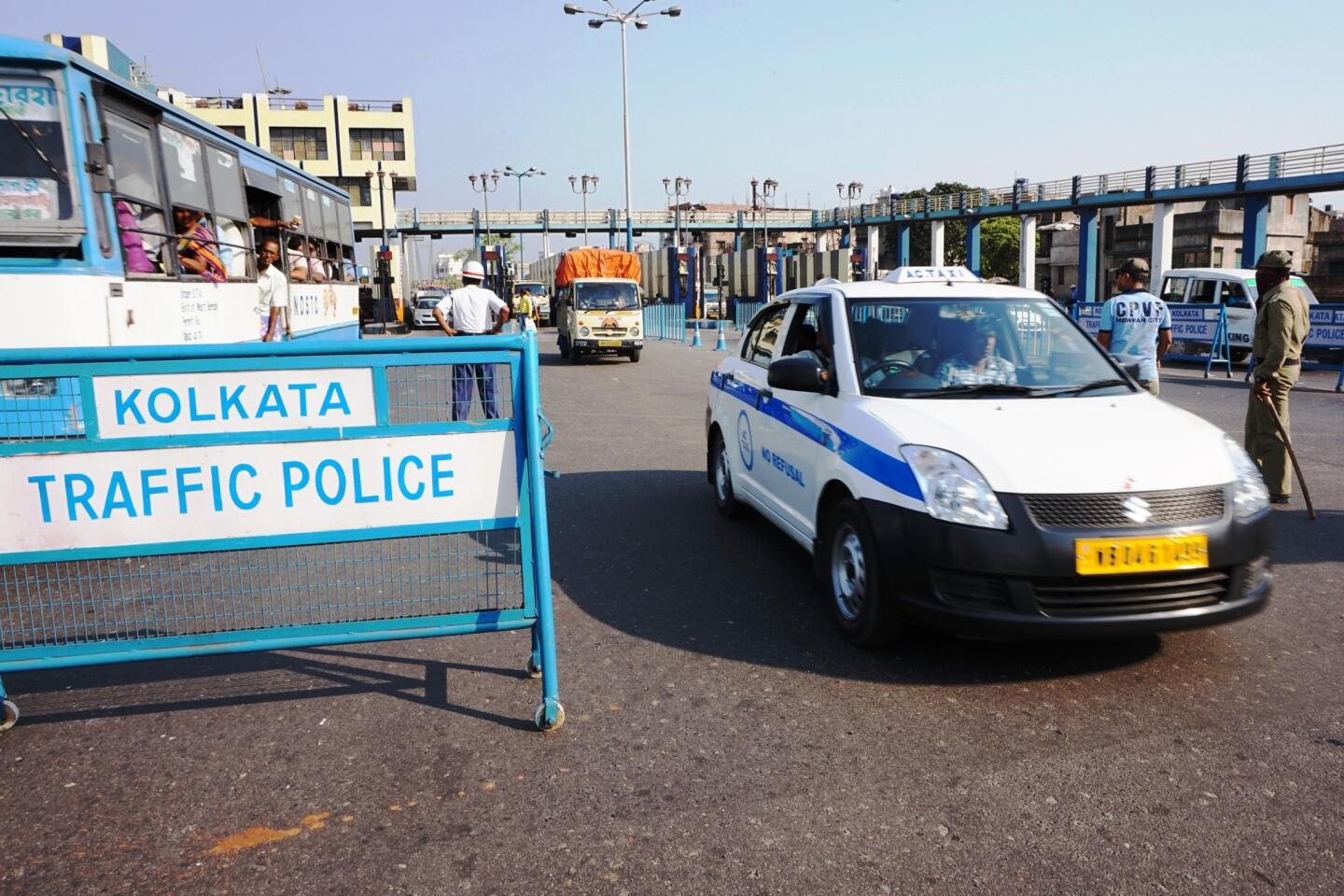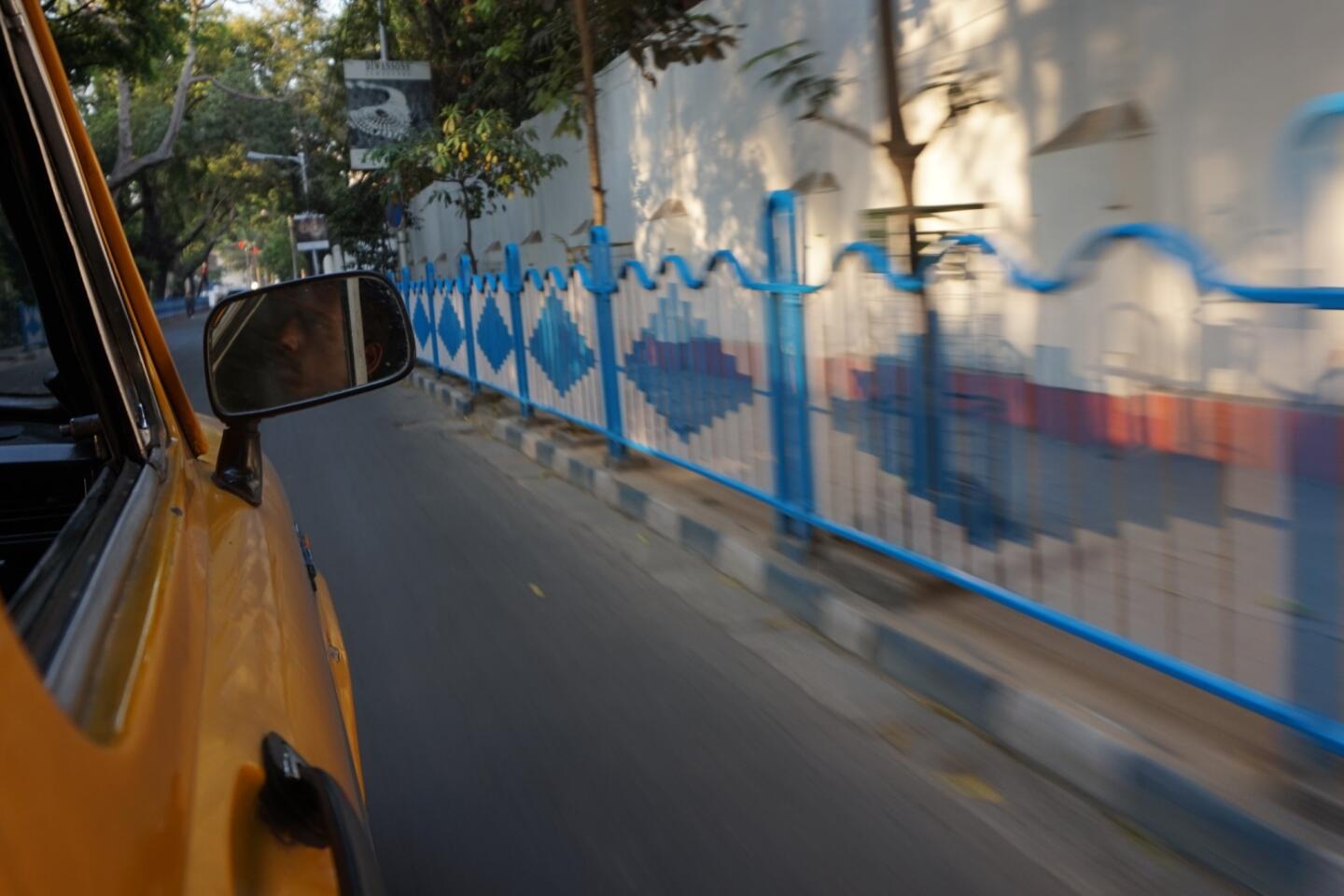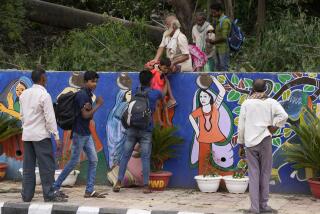Great Read: ‘Eccentric and slightly absurd’: Leader repaints Kolkata blue and white
Reporting From Kolkata, India — For more than three decades, this city of tumbledown slums and decaying colonial relics lived under the red banner of Indian communism.
Four years ago, Mamata Banerjee, a rabble-rousing politician who dabbles in the arts, ousted the communists to become leader of the state of West Bengal and quickly decided its capital needed a makeover.
Drawing inspiration from her proletarian wardrobe of hand-woven white cotton saris with sky blue trim — and blue-and-white rubber flip-flops — Banerjee decreed that Kolkata be repainted in those colors.
And she meant all of Kolkata: Government buildings, police stations, curbsides, overpasses, bus stops, food stalls, bridges, taxis, tree trunks, traffic cones and even trash compactors have all been coated in cerulean blue and pristine white.
To make a baseball comparison that would be lost on cricket-mad India, this city of 5 million, formerly known as Calcutta, has been done up a bit like Dodger Stadium on opening day.
In a country of pell-mell cities that often lack even the most basic urban planning, it is a civic project of unusual thoroughness — and it has sparked a spirited debate over Banerjee’s strong-arm leadership style and aesthetic sensibilities.
“New government, new colors,” Devnath Mandal, a police officer posted at one end of a bridge spanning the Hooghly River, said as he watched motorists weave through steel traffic barricades painted blue and white.
“The city looked a bit old before,” Mandal, a 20-year veteran of the police force, said through betel-stained teeth. “Of course, it cost money, so maybe it’s not totally worth it, but change makes people feel good.”
Not everyone finds the two-tone uniformity appealing.
“Many people’s view is that it’s eccentric and slightly absurd,” said Ruchir Joshi, a prominent writer and filmmaker in Kolkata.
Worse, some say, the money spent on repainting could have been better deployed to improve living conditions across Kolkata and West Bengal, a state still buried under about $30 billion in debt from the communist years. Officials have not disclosed the price of the project, but just repainting the riverside city’s 1,000-plus miles of roads and bridges would probably have cost millions of dollars.
Banerjee, 60, has said the idea came to her after a visit to Jaipur in northern India, dubbed the Pink City for its terra-cotta-painted historic quarter.
Red and green — the official color of her centrist All India Trinamool Congress party, whose name means “grass roots” — were too political, she said, so she chose blue and white. Kolkata authorities also announced a tax benefit for homeowners who repainted their residences in the favored hues.
From his office in the 15-story temporary headquarters of the West Bengal state government, Malay Ghosh, chief engineer in the state’s public works department, looked out over a crisscrossing series of repainted highway overpasses. The pattern seemed designed to disorient drivers: all-blue railings, blue-and-white rectangles along the curb and large blue diamonds stamped across the concrete barriers. (The street signs also were blue and white, but Ghosh said those predated Banerjee’s order.)
The blue, he said, stands for the sky, which is limitless, while the white connotes peace.
“It’s exclusively the CM’s wish,” said Ghosh, using the abbreviation for Banerjee’s title, chief minister. “She decided, so we did it.”
He added quickly, “I think it’s nice.”
Banerjee, whose office did not respond to requests for an interview, has a reputation for bold gestures. Born into a modest Kolkata family, she burst onto the national scene as a young student activist in 1975, when she led a protest against a socialist politician by dancing on the hood of his car.
Banerjee, widely called Didi, or elder sister, is known as a political bruiser who has been on the receiving end too, having survived physical attacks by communist opponents during her decades of agitating.
Her 2011 election victory was a watershed for the state. One newspaper ran a full-page illustration of a fist smashing through Writers’ Building, the imposing, colonnaded seat of state government whose brick facade is famously red — comparing the communists’ defeat to the fall of the Berlin Wall.
When Banerjee’s administration announced in 2013 that the 18th century edifice would undergo extensive interior renovations, local broadcaster NDTV asked, “Will the chief minister stop at fixing fire and security problems at Writers’ or does she also have a new color scheme in mind for it?” (Officials say there are no plans to repaint the exterior.)
Critics charge that Banerjee has indulged an authoritarian streak, and that to get something done in West Bengal, it is sometimes enough to say, “Didi wants it.”
She has long fancied herself an artist and poet — aides say she paints in an anteroom off her office — and some city arts patrons have begun paying top dollar for her depictions of flowers and Hindu icons. A few years ago, in an effort to please Banerjee, a temple committee draped the Hindu goddess Durga in the same blue hues for the city’s biggest religious festival.
The fusty gentleman class that rose to prominence when Kolkata was the capital of British India looks down on her as “the coarse leader of Bengal’s hooch-drinking underclass,” journalist Sambuddha Mitra Mustafi wrote last year in the Indian newsmagazine Caravan. To them, the blue-and-white motif is the latest example of Banerjee imposing her crass aesthetic on their city.
Others say her cosmetic changes divert attention from West Bengal’s persistent economic and security problems.
“She’s done nothing on the slums in the city, for example,” filmmaker Joshi said. “If there had been some improvement there, one could forgive her these little eccentricities. But the city is as chaotic as it was, the condition of the poor is as bad as it ever was, violence is growing — and meantime everything is being painted blue and white.”
Months after Banerjee took power, a 37-year-old woman was gang-raped in a car in the vibrant Park Street district, the cultural heart of Kolkata. Banerjee’s immediate reaction was to accuse the victim, who recently died of meningitis, of inventing the story to malign her government.
Akhil Yadav, a taxi driver whose shabby bumblebee-yellow sedan stood in sharp contrast to the bright new curbsides, said petty corruption hasn’t improved under Banerjee’s leadership. Police officers still stop cabbies in parts of the city after nightfall, demanding small bribes of about $2, he said.
Yadav, a migrant father of two from the poor northern state of Bihar, said it would have been better if authorities spent the money on the city’s neediest residents.
As he sped past a painted bus stop, he caught sight of a bank of food stalls that had recently been branded with loud blue stripes and sighed.
“It’s distracting,” he said. “The whole city looks the same.”
More to Read
Sign up for Essential California
The most important California stories and recommendations in your inbox every morning.
You may occasionally receive promotional content from the Los Angeles Times.

